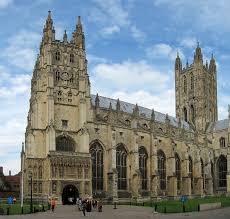The Historical Significance of Canterbury Cathedral

Introduction
Canterbury Cathedral, a UNESCO World Heritage site, stands as one of the most significant religious structures in the United Kingdom. With its remarkable architecture, rich history, and role as the seat of the Archbishops of Canterbury, the cathedral is not only a place of worship but also a symbol of the Christian faith in England. Its relevance extends beyond religion, influencing art, literature, and culture throughout the centuries.
Architectural Marvel
The cathedral’s architecture is a stunning combination of Norman, Gothic, and Romanesque styles, showcasing the evolution of building techniques over nearly 1,500 years. The iconic Bell Harry Tower, completed in 1498, rises majestically above the skyline and is a defining feature of the cathedral’s silhouette. Visitors can marvel at the intricate stained glass windows, which not only embody the artistic styles of their respective periods but also tell Biblical stories and the history of the church.
Historical Significance
Founded in 597 AD, Canterbury Cathedral has served as a pilgrimage site since the martyrdom of Thomas Becket in 1170. His assassination, which sparked outrage and led to his canonisation, established the cathedral as a major pilgrimage destination, famously captured in Geoffrey Chaucer’s “The Canterbury Tales.” Today, the cathedral attracts over 1 million visitors annually, contributing to the local economy and preserving its legacy.
Recent Events
In recent years, Canterbury Cathedral has embarked on numerous restoration projects aimed at preserving its structure and artwork. Following the COVID-19 pandemic, the cathedral has also adapted its services, implementing online services and outdoor worship options to ensure continuity for its congregation. Moreover, the institution held commemorative events in 2022 to celebrate the 850th anniversary of Becket’s martyrdom, reminding the public of its enduring historical and spiritual significance.
Conclusion
The importance of Canterbury Cathedral transcends its stunning architectural prowess and deep-rooted history; it remains a vibrant centre of worship, community, and heritage. As preservation efforts continue and services adapt to modern needs, the cathedral is set to maintain its status as a crucial landmark not only for pilgrims but also for those interested in Britain’s history. This rich tapestry of faith and culture ensures that Canterbury Cathedral will remain relevant for future generations, inviting them to explore its profound legacy.
